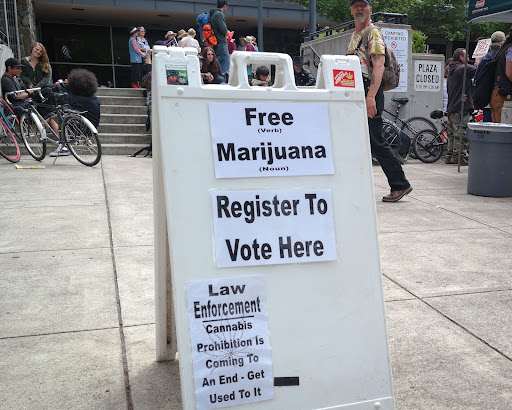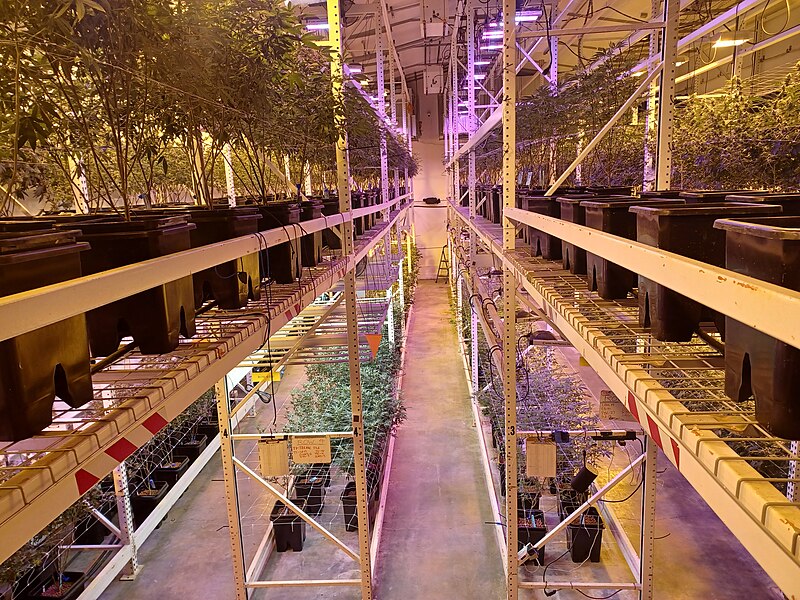New York City is known for many things, but among them is something more unlikely: the pungent smell of cannabis. In the first half of 2022, there were over 5,000 smell-related complaints.
New York State legalized cannabis in 2021, and 23 other states have, or had, done the same. This widespread legalization has come with praise and criticism alike. But some advocates are trying to take it one step further by pushing for the legalization of other types of drugs.
There are both positives and negatives to legalizing cannabis and drugs as a whole. The following are some of the main arguments of each side.
Pro #1: Regulation and Safety
The legalization of drugs would allow for more efficient regulation.
Currently, the production and distribution of any type of recreational drug is done without state or federal oversight, creating a wide range of problems. The drug could be manufactured in a way that is harmful, or even fatal. Especially considering the rising crisis of fentanyl, this is a significant cause of concern.
Last May, researchers at the NYU School of Global Public Health found that more than 80% of New Yorkers who inject drugs tested positive for fentanyl, despite only 18% reporting using it intentionally.
The blurry progression from the supplier to the individual makes it hard to track where the drug was made, if it was laced, and who knew about it. This means that illegal vendors and suppliers can continue producing cheap and faulty drugs, with little to no penalties.
Regulation can take many forms, also encompassing underage purchase enforcement.
8.33% of 12 to 17 year-olds nationwide report using drugs in the last month. That’s over 2 million children. When illegal vendors control the market, it allows for products to easily reach minors. With legalization and tighter regulation, vendors will likely be under stricter surveillance. More oversight may lead to a decrease in adolescent drug abuse – but it’s important to note that there are studies supporting an increase in adolescent drug abuse, too.
Pro #2: Social Justice/Rehabilitation
Social justice within the courtroom is something that is increasingly pushed for, and rightly so. Many argue that the legalization of drugs would reduce the racial disparities that warrant drug-related arrests.
Currently, over 44% of incarcerated individuals are in prison for drug offenses. Within this statistic, racial disparities are still rampant. People of color are over 3.6 times more likely to be arrested for cannabis possession than white individuals. Despite this, cannabis consumption by race doesn’t vary much – in 2014, the difference in use between white and black individuals was just over 2%.
Attempts to break racial barriers are already in motion with the decriminalization of cannabis. In New York City, The Marijuana Regulation and Taxation Act, enacted in 2021, expunges cannabis-related charges from records automatically. Researchers at Brookings call this measure “crucial” for racial equity, as in 2020, 94% of individuals in New York City arrested on cannabis-related charges were people of color.
The idea of social justice goes hand in hand with the idea of a system that rehabilitates drug users rather than criminalizing them. This is the rationale behind many state legislatures’ decisions to decriminalize or legalize drugs.
Around 65% of inmates in prison have a substance use disorder. While these individuals are serving their time, their tolerance for substances goes down. As a result of this, in the first two weeks after being released from prison, the chance of a drug-related death rises anywhere from three to eightfold.
But it’s not just tolerance. The lack of adequate rehabilitation in prisons exacerbates the problem. There is no shown correlation between drug imprisonment rates and drug usage within states. Pew Charitable Trust cites the example of Tennessee and New Jersey. Tennessee imprisoned drug offenders at three times the rate of New Jersey in 2014, but their self-reported drug usage rates were almost identical.
Overall, people are calling for a change in the way our system deals with drug offenders. Whether that be support systems, legalization or a mixture of both, something must be changed.
Con #1: Increased Usage
There’s no question about it: the legalization of drugs has, and will, increase the usage of them.
When a drug is legalized, industries are born with the sole purpose of selling consumers the drug. This means general publicity, such as advertisements. In the end, it leads to more individuals buying and using drugs – a lot more. In fact, the U.S Department of Justice estimates that the legalization of drugs would raise the number of drug addicts by 25%.
Legalization could also lead to lower prices. No company would have an immediate monopoly over the market, as they would all be up-and-coming businesses. To appeal to potential consumers, companies would compete with each other. This would result in price competition and markdowns within industries, therefore driving down the price of drugs. The cheaper something is, the more access an individual has to it.
Additionally, the idea of decreased adolescent drug use was aforementioned on the ‘pro’ side, but an argument can also be made for the ‘con’. One could argue that the legalization of drugs allows for them to be more openly bought and sold, with the drugs potentially finding their way into the hands of a teenager.
Con #2: Public Safety
Many who are against the legalization of drugs cite public safety concerns. Numerous studies have shown a correlation between the legalization of cannabis and an increased rate of traffic accidents. This makes sense – with increased usage under legalization, more individuals will drive under the influence. It’s important to note, however, that many studies have also disproved a correlation – as of now, there are no definite findings.
As well as accidents, there have been studies citing a correlation between cannabis legalization and increased violent crime rates. In the state of Colorado, criminal networks have become increasingly prominent since the legalization of cannabis in 2014. In cities like Denver and Seattle, homicide rates rose after legalization. Yet it’s important, again, to note that studies on violent crime trends have varied results.
Going forward, more research on the effect of drug legalization on public safety is needed to determine definite outcomes.
As an Example: Oregon
Currently, the only drug that is legal in a wide range of states is cannabis. However, there are certain states that have reduced the criminal penalty to a civil penalty for possessing or using different types of drugs – otherwise known as decriminalization.
And although this article focuses on legalization, we can learn from those states. One of them is Oregon.
In November of 2020, Measure 110 was passed in the state of Oregon. It decriminalized small amounts of drugs like heroin, cocaine, and fentanyl. This meant that the penalty for being in possession of these drugs would be much lower – something like a $100 dollar fine instead of criminal charges. There were also more accessible opportunities for long-term addiction services. 58% of Oregonians approved the measure. Overall, the purpose was to foster an environment of rehabilitation for users, not punishment.

(Photo Credit: Visitor7, CC BY-SA 3.0 <https://creativecommons.org/licenses/by-sa/3.0>, via Wikimedia Commons)
But just last month, in March 2024, the Oregon House voted to create a new misdemeanor for drug offenses – essentially re-criminalizing drugs. This came in response to some of the disastrous effects of Measure 110.
Firstly, critics have argued that the law didn’t go far enough. Because the production and distribution of drugs were still highly criminalized in both Oregon and at the federal level, underground markets were still prominent, leading to unsafe drug manufacturing sites. The main concern with these underground markets was fentanyl, and it’s still an issue – a fentanyl state of emergency was declared in Oregon just over two months ago.
But the louder argument has been that the law simply did not work. Overdose deaths in Oregon rose from 280 to 956 between 2019 and 2022. What’s worse is that unintentional overdose deaths rose anywhere from 14% – 25% in 2021. People still died – but whether that was because of rising overdoses across the country or because of Measure 110 is still blurry.
Additionally, individuals simply didn’t seek out rehabilitation, even when given citations and access to it. State auditors found that in the year after the law was passed, only 1% of people who received citations for drug possession reached out to the hotline. As of June of 2023, the hotline only received an average of 10 calls per month that were related to the citations.
Although the Oregon House and Governor Tina Kotek have made the decision to re-criminalize drugs, the system in Oregon still promotes rehabilitation, keeping the tax on cannabis products to fund addiction treatment and allowing expungement from records if an individual completes treatment.
One can use the example of Oregon to argue either way. Some would say that the legalization of drugs would create safer drugs overall, leading to fewer overdoses. But at the same time, others could say that legalization of drugs would lead to a dramatic increase in usage, potentially leading many into an addiction.
Solution?
As previously mentioned, there are scientific studies that prove theories about legalization, and others that go on to disprove them. More research is needed to find definite outcomes of the legalization of drugs. But at the end of the day, America’s drug controversy will only be solved through a balance of safety and discouragement policies.
At the end of the day, America’s drug controversy will only be solved through a balance of safety and discouragement policies.

